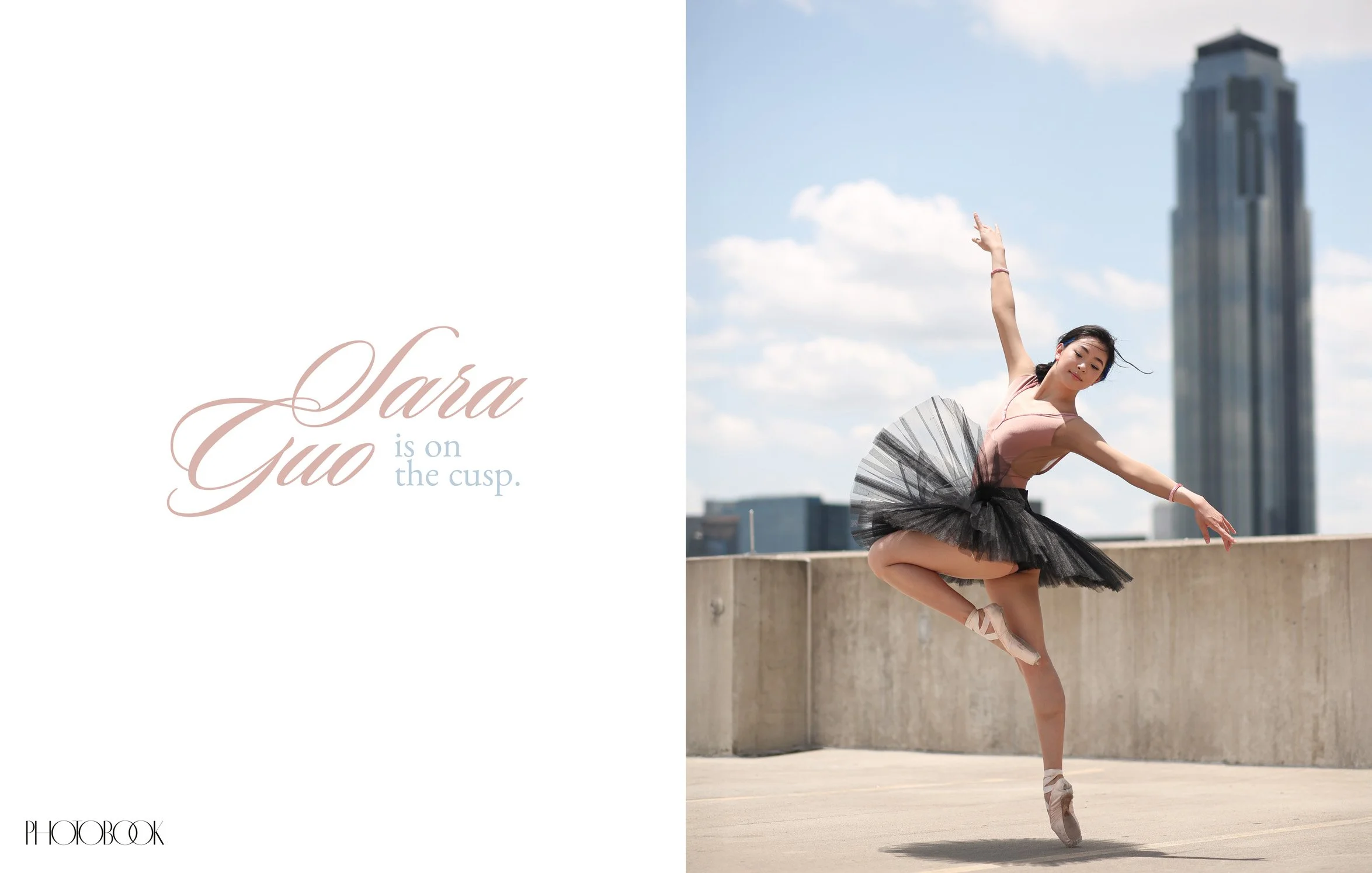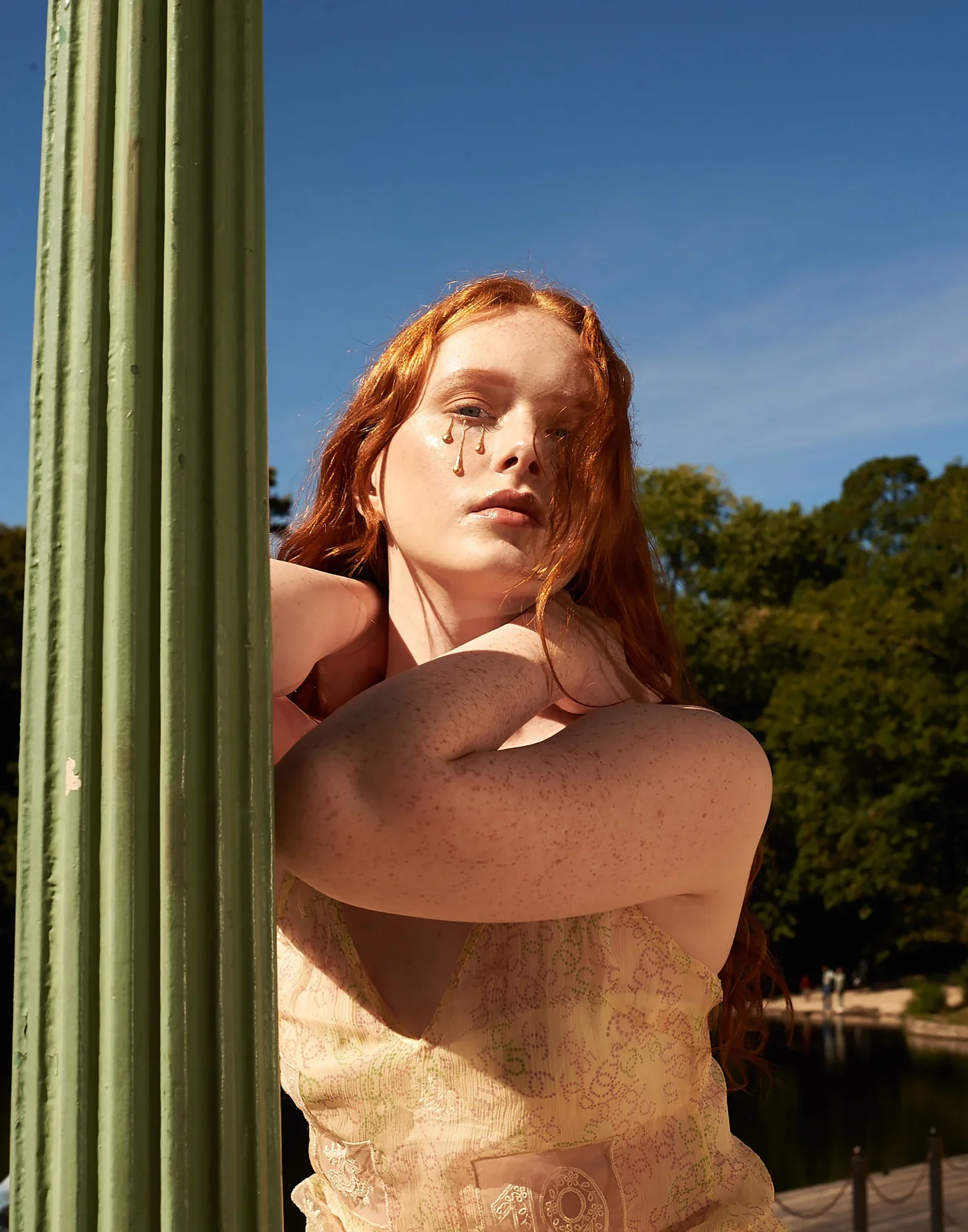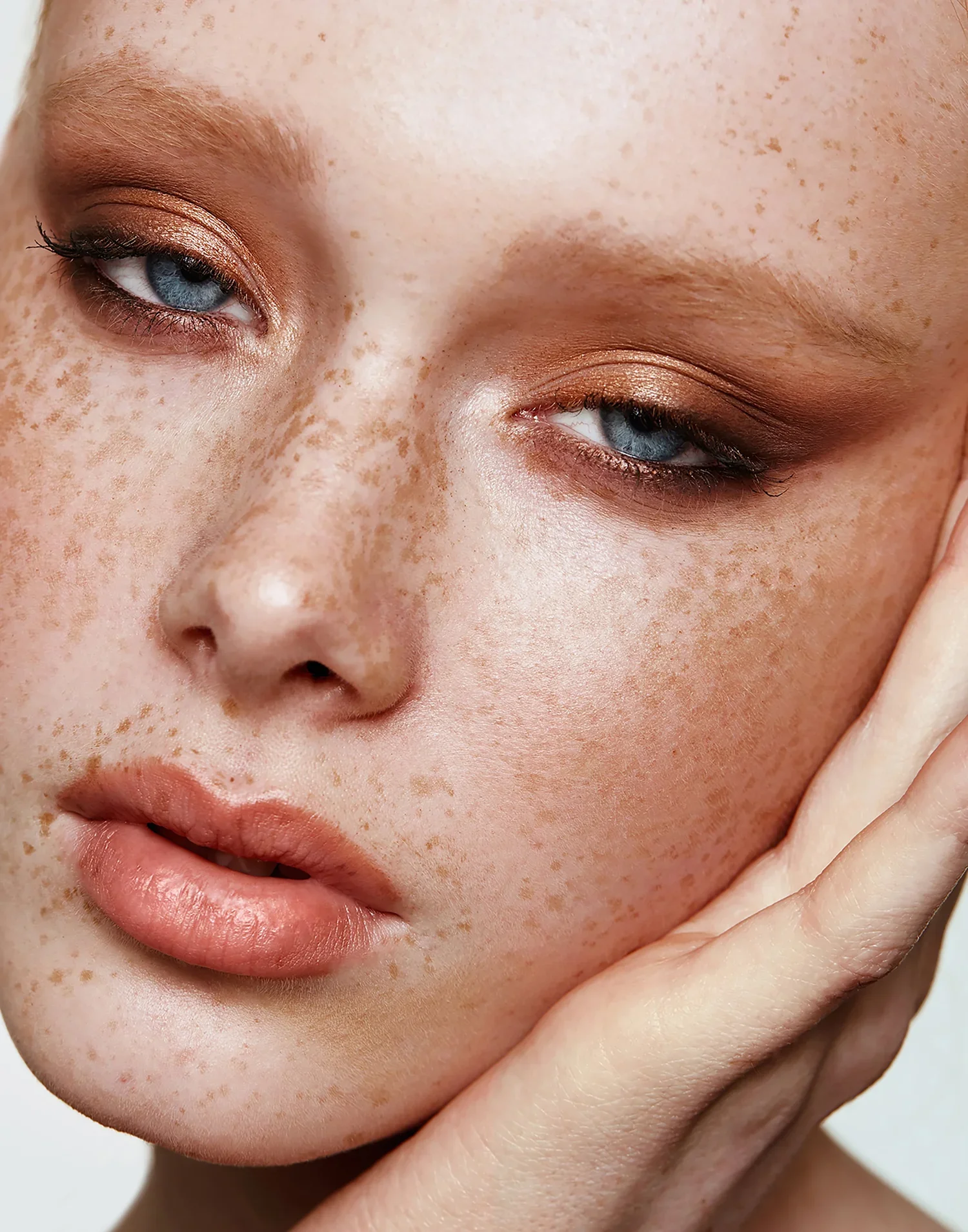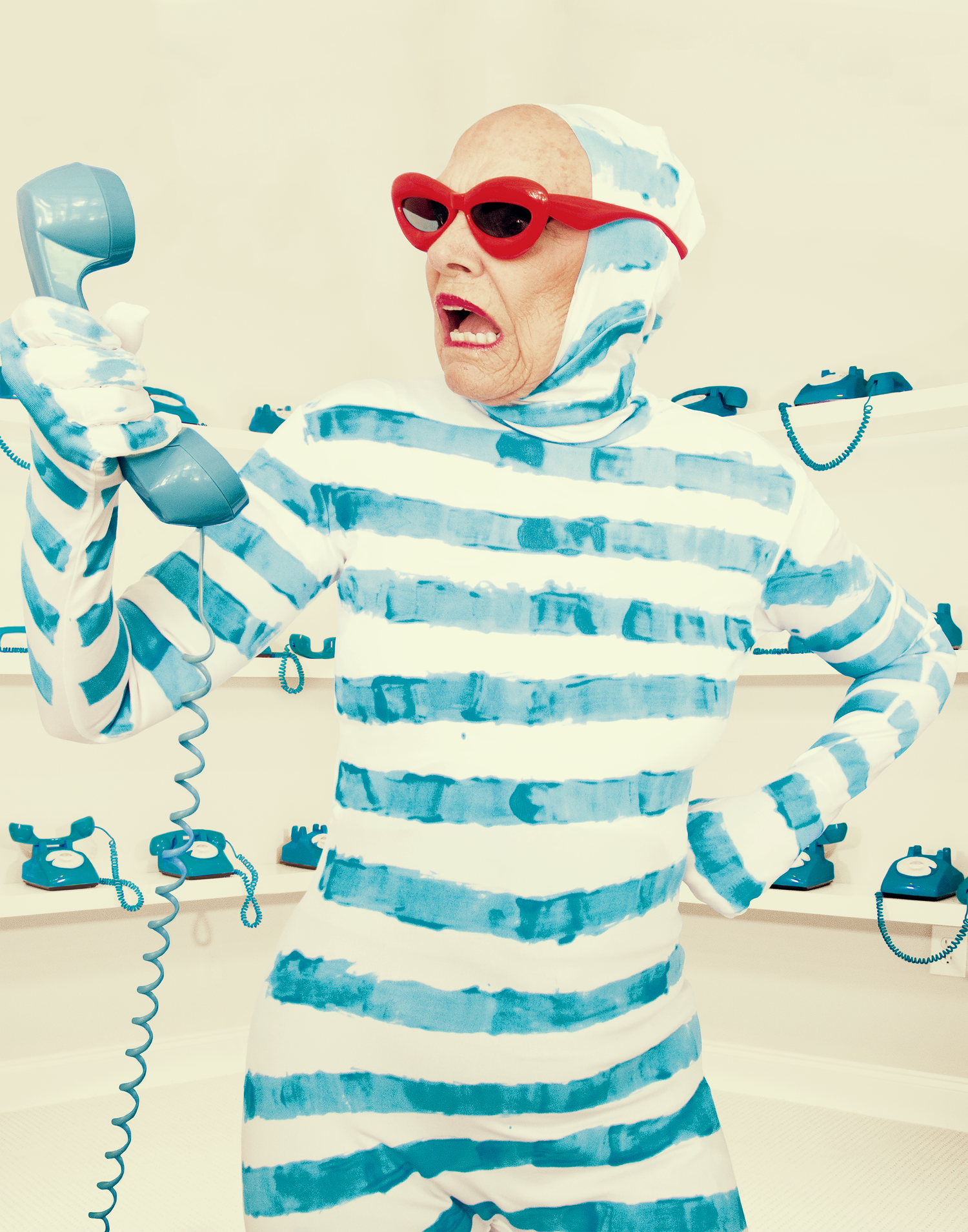Sara Guo, The Art of Choreography
Through dance and movement, Sara Guo finds a profound connection to her Chinese heritage. What appears beautiful to the eye goes far deeper in meaning; every movement is a reflection of memory and self-expression. Like all art, dance is open to interpretation, but it’s uniquely alive and multifaceted. It must look effortless, no matter the strain it places on the body and mind.
Yet, Guo has now grown beyond the title of dancer. As a choreographer and educator, she creates with intention to tailor each piece to the individual before her. Guo’s work honors tradition while exploring identity, pushing the boundaries of what dance can communicate about humanity itself.
For Guo, being an educator allows her to realize just how much dance matters. It has the capacity of changing lives, especially those of young dancers who have so much to share with the world. With her work, she hopes to guide younger dancers as they navigate the complex world of mind, body, and movement.
Ballet is a practice that many partake in when they are young, but abandon as they grow older. Why did you decide to keep going?
I kept going because ballet became a mental challenge for me, something I could always push myself to improve in. There’s no such thing as perfection in ballet, and that idea kept me motivated. I didn’t have the most arched feet or hyperextended legs, but I knew how to dance and perform. Ballet became my outlet, a means of self-expression. From age ten to seventeen, it was my whole world.
What was the biggest challenge you faced when adapting from formal training at Houston Ballet to Juilliard’s BFA program?
Imposter syndrome, definitely. It felt like stepping into a whole new universe. Suddenly, the schedule was more intense than I could have ever imagined, and I was surrounded by dancers from diverse training backgrounds and with a wide range of goals. I started to feel like I wasn’t versatile enough and that I was being typecast as a particular kind of dancer—which is my biggest fear. Over time, I was able to overcome that imposter syndrome and allow myself to push boundaries, embrace my strengths, and showcase my versatility.
How did you first get into choreography? What does your process when creating a choreography look like?
I don’t think I ever formally got into choreography. I’ve always enjoyed moving and dancing outside of class, creating my own movement style and making unusual shapes with my body that expressed how I felt in the moment. It was really because of the encouragement from my teachers that I was able to let that creative side of my brain flow.
My process when creating choreography always differs depending on the dancer or dancers in front of me. The goal isn’t to make them do movements that look the most flattering on my body, but to create something that’s tailored to the human in front of me. Sometimes the creative juices are flowing, and other times they’re not, but I try to show up and dance anyway. Then I bring in the dancers I have in mind, if they’re available, and start to play with the choreography I’ve made so far. Once they learn it, the editing begins. That’s the most fun, and also the most daunting part of the process. A teacher once told me that a dance is finished when you can’t take anything more away from it. But I don’t think the process ever truly ends. Even when a piece feels “finished,” it keeps evolving every time it’s performed. That’s the beauty of living, breathing art.
How has your work as a choreographer and educator changed the way you view dance?
I no longer view dance as just a visually pleasing art form,t’s so much more than that. Dance is powerful. Creating and experiencing dance has revealed so many truths to me. It’s unlocked emotions I didn’t even realize I was holding onto and it’s helped me process things that words simply couldn’t. Through movement, I’ve learned to confront vulnerability and loss. As an educator, I’ve also seen firsthand how dance can shape a child’s life—for better or for worse. It can build confidence, discipline, and a sense of belonging, but it can also expose insecurities and self-doubt if not nurtured in a healthy environment. Teaching has made me more aware of the responsibility that comes with guiding young dancers, not just in their technique, but in their self-worth and how they see themselves through the art form. Through all of this, I’ve come to view dance as a reflection of life itself. It’s constantly changing, unpredictable, and deeply human.
As your career as a dancer evolves, do you notice any changes in your mind and body connection? How does time and experience affect this?
Dancers know their bodies. Our bodies are our instruments, but so are our minds. The ability to pick up choreography in just a few minutes and translate that information directly into the body takes years of practice, discipline, and awareness. That mind-body connection isn’t something that’s ever complete, it’s constantly evolving. With time and experience, I’ve noticed how much more in tune I’ve become with my body, its limits, and its strengths. When I was younger, I focused so much on achieving technical precision. Now, I find myself listening more deeply to the details. It’s a continuous learning process. The longer I dance, the more I realize that true artistry comes from the dialogue between mind and body.
In what ways has dance helped you connect with your Chinese heritage?
My mom graduated from the prestigious Beijing Dance Academy, where she studied traditional Chinese dance. So, when she realized I could never sit still as a kid, she enrolled me in traditional Chinese dance classes. At first, it was just a way to channel my energy, but soon I realized that through dance, I was stepping into a world rich in history, culture, and stories. Dance became a way to experience my heritage, not just learn about it. Even now, in my own choreography, traces of traditional Chinese dance are always present. Whether it’s in the fluidity of a gesture or the way a shape unfolds, I find myself instinctively drawing from that lineage. Dance has given me a bridge between two loves: my culture and the art form that has shaped my life. It’s through movement that I feel most connected to my roots, and through those roots that I continue to grow as an artist.
Last year you were named a YoungArts winner with distinction in Dance Choreography. How did it feel to get this recognition?
Shocked! Honestly, I couldn’t believe it. To be recognized for something I’m so passionate about felt surreal. I think the best way to describe it would be wanting to jump ten feet in the air and probably scream at the same time! It was an incredibly wild and amazing feeling.
Your work a lot with younger artists and look to inspire and teach them about using movement to explore identity through storytelling. How do you hope this work will help these artists as they move forward in the industry?
I hope it helps younger artists stay curious and brave, to take risks and tell the stories they feel need to be shown. I want them to see how powerful their own perspective is, and to carry that confidence with them as they move forward. Dance is their voice, and I hope they use it fearlessly.
What is something you wish you could say to your younger self?
Everything happens for a reason.
Are there any specific kinds of stories you hope to tell through dance or choreography looking forward?
I want to tell stories that feel outrageous, ones that challenge expectations, push boundaries, and make people see the world in a slightly different light. I also want to tell stories that are deeply personal, that come from lived experience and emotion, because those are the stories that feel most honest. I want to tell human stories, stories about connection, struggle, and joy. Through dance, I hope to capture the complexity of what it means to be human and to create moments that resonate with audiences on an emotional level.
Interview by Sabine Obermoller, Contributor, PhotoBook Magazine
Tearsheets by Daniel López, Art Director, PhotoBook Magazine
Images Photographed by Molly Chen + Kate Yu + Alana Campbell







